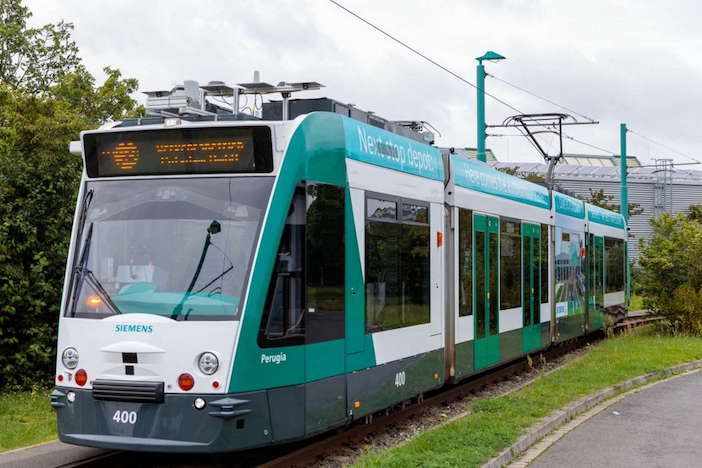Siemens Mobility division, together with its local transit agency partner, will be demonstrating the world’s first autonomous tram operating in a real-world traffic and pedestrian environment during the InnoTrans 2018 trade show in Berlin, Germany.
Siemens Mobility has been conducting a joint research and development project with the ViP Verkehrsbetriebe Potsdam public transport operator, and the partners will be presenting their work at InnoTrans, the leading international trade fair for transport technology.
From September 18-21, Siemens and ViP will be demonstrating a test tram driving autonomously in real traffic on a 3.7-mile (6km) stretch of the tram network in the city of Potsdam, which is part of the Berlin/Brandenburg Metropolitan Region.
Known in North America as streetcars or trolley cars, trams run on tracks along public urban streets, or sometimes on a segregated right of way, and are widely used in European cities. Trams are in a period of growth, with about 800 tram systems currently operating around the world, 10 or so new systems being opened each year, and many being gradually extended.
ViP has provided a Siemens Combino low-floor electric tram for the demonstration project. The experimental vehicle is equipped with multiple lidar, radar and camera sensors that serve as the tram’s ‘digital eyes’, capturing its surrounding traffic environment. At the same time, complex algorithms function as the vehicle’s ‘brain’ by interpreting and evaluating data from the momentary operating situation, providing a prognosis for further development of the situation, then triggering an appropriate response by the tram.
Due to its artificial intelligence (AI) capabilities, the tram responds to trackside tram signals, stops at tram stops, and reacts autonomously to hazards such as crossing pedestrians, cyclists and other road vehicles. The experimental tram being used to demonstrate autonomous driving at the Potsdam world premiere is not designed for commercial use. The current pilot project aims at identifying the technological challenges of autonomous tram driving under real-life conditions, then developing and testing solutions for them. Siemens says a continuation of the cooperation project is already being discussed with ViP.
“This world premiere demonstrates how we are actively shaping the mobility of the future. Our autonomous tram can already master essential operating tasks in real road traffic at this stage of development,” said Sabrina Soussan, CEO of Siemens Mobility.
“By relying on the ‘Siemens Tram Assistant’ collision warning system being used in, among other places, our Avenio M tram operating in Ulm, Germany, we have already reached series maturity; this is an important milestone on the way to autonomous driving. By making trains and infrastructure intelligent, we can guarantee availability and enhance safety in local and long-distance travel.”





